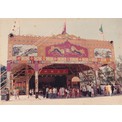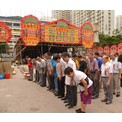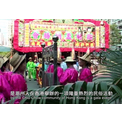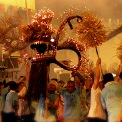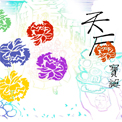 Collections
Collections The Oral Legacies (I) - Intangible Cultural Heritage of Hong Kong
The Oral Legacies (I) - Intangible Cultural Heritage of Hong Kong Yu Lan Ghost Festival of the Hong Kong Chiu Chow Community
Yu Lan Ghost Festival of the Hong Kong Chiu Chow Community The Origin of the Yu Lan Festival
The Origin of the Yu Lan Festival
The “Yu Lan Festival” is known as “Ullambana” in Buddhist scriptures, “Zhongyuan Festival” in Taoist contexts, and “Hungry Ghost Festival” or “Mid-Seventh Month” for the general public. There are many stories regarding its origin, and one of them is about Monk Mulian (or “Maudgalyayana” in Sanskrit) who saved his mother’s soul from the tortures of Hell. It therefore has the didactic purpose of preaching filial piety, giving alms and doing good deeds. History recorded that the first Ullambana was launched by Emperor Wu of Liang of the Southern dynasty in the 6th century. Later it became a folk festival, and the offerings also shifted, instead of for the Buddhist clergy, they became alms-giving as a way to transmute the souls of the departed to an afterlife.
The Chiu Chow population in Hong Kong amounts to over 1.2 million. The community has a long-standing tradition of holding a Yu Lan Festival every year for almost 120 years. The first was held by the Chiu Chow Kung Wo Tong in 1897 (Chiu Chow Kung Wo Tong is still the organiser of the annual Yu Lan Festival in Moreton Terrace in Causeway Bay today). This led to similar sponsorships from other Chiu Chow communities in different districts of Hong Kong, and the number of venues grew, while the scale also augmented over the years.
